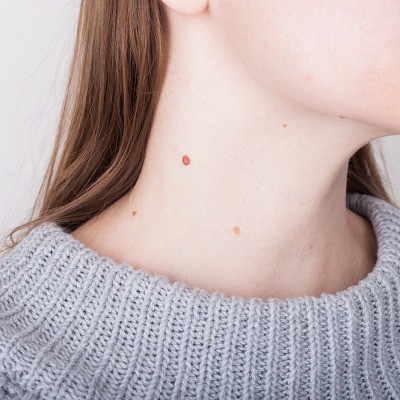Warts are a common skin condition caused by the human papillomavirus (HPV). Though they are harmless, warts can be unsightly, uncomfortable, and difficult to treat, especially when they appear on the hands, feet, or face. These areas often require specialized treatments due to their unique sensitivity, frequent exposure, and functionality. In this blog, we’ll explore the types of warts that develop in these regions, wart removal in Islamabad, and tips for prevention and care.
Types of Warts
Warts that appear on the hands, feet, and face fall into different categories based on their appearance and location:
- Common Warts (Hands):
- These rough, raised bumps often develop on the fingers and backs of the hands.
- They are frequently caused by skin-to-skin contact or shared objects like towels.
- Plantar Warts (Feet):
- Found on the soles of the feet, plantar warts grow inward due to the pressure of walking or standing.
- They can cause pain, especially if located on weight-bearing areas like the heels or balls of the feet.
- Flat Warts (Face):
- These smooth, flat-topped warts are smaller and often appear in clusters.
- They are more common on the face, forehead, and around the mouth.
Each type of wart requires a tailored approach to treatment to ensure effectiveness and avoid complications.
Challenges in Treating Warts on Hands, Feet, and Face
- Hands:
- Hands are exposed to constant friction and frequent washing, which can hinder treatment adherence.
- The risk of spreading warts to other areas is higher due to frequent use of the hands.
- Feet:
- Plantar warts are surrounded by thick skin, making it harder for topical treatments to penetrate.
- The pressure from walking can cause discomfort, delaying treatment and healing.
- Face:
- The skin on the face is thinner and more sensitive, requiring gentler treatment options.
- The risk of scarring is higher, making precision and professional care essential.
Specialized Treatment Options
- For Warts on Hands:
- Salicylic Acid:
Over-the-counter salicylic acid products are effective for common warts on the hands. Regular application, combined with filing the wart and soaking in warm water, can yield results in 2–12 weeks. - Cryotherapy:
Dermatologists often recommend freezing the wart with liquid nitrogen. This treatment is quick but may require multiple sessions to completely eliminate the wart. - Duct Tape Therapy:
Covering the wart with duct tape for several days, then filing it, can help remove layers of the wart. Though evidence is mixed, this method is safe and non-invasive. - Laser Treatment:
For stubborn warts, laser therapy can destroy the wart tissue while preserving the surrounding skin.
- Salicylic Acid:
- For Plantar Warts (Feet):
- Prescription Strength Salicylic Acid:
Higher-concentration salicylic acid is often used to soften the thick skin of the foot and gradually remove the wart. - Cryotherapy:
Effective for plantar warts, cryotherapy freezes the wart, killing the virus and promoting the skin’s healing process. - Cantharidin Application:
This blistering agent, applied by a healthcare professional, causes the wart to separate from the skin. - Surgical Removal or Curettage:
For painful or persistent plantar warts, a dermatologist may use a small surgical tool to cut out the wart. - Immune Therapy:
Techniques like imiquimod cream boost the immune system’s ability to fight HPV, particularly for resistant plantar warts.
- Prescription Strength Salicylic Acid:
- For Warts on the Face:
- Topical Retinoids:
Retinoid creams are effective for flat warts on the face as they speed up skin cell turnover and remove the wart. - Cryotherapy with Caution:
Liquid nitrogen can be used on facial warts, but it must be applied carefully to avoid damaging delicate skin. - Laser Therapy:
Lasers are highly effective for facial warts, offering precision and minimal scarring. Pulsed-dye lasers are particularly suitable for sensitive facial areas. - Chemical Peels:
Mild chemical peels, such as glycolic or salicylic acid peels, can gradually remove flat warts without causing harm to facial skin. - Professional Monitoring:
Always seek professional care for facial warts to avoid complications like hyperpigmentation or scarring.
- Topical Retinoids:
Prevention and Care
To prevent the development or recurrence of warts on the hands, feet, and face, follow these tips:
- Practice Good Hygiene:
- Wash hands regularly to reduce the spread of HPV.
- Avoid touching your face unnecessarily.
- Protect Your Feet:
- Wear footwear in communal areas like showers, locker rooms, and pools.
- Keep feet dry, as HPV thrives in moist environments.
- Avoid Sharing Personal Items:
- Do not share towels, razors, or nail clippers with others.
- Boost Your Immune System:
- A strong immune system can help your body fight HPV naturally. Maintain a healthy lifestyle with a balanced diet, exercise, and adequate sleep.
- Do Not Pick at Warts:
- Picking at warts can spread the virus to other parts of your body or to others.
When to See a Doctor
If you have warts that persist despite treatment, cause pain, or spread rapidly, consult a dermatologist. This is especially important for warts on the face, where improper treatment can lead to scarring or pigmentation changes. A healthcare professional can evaluate your condition and recommend the best course of action.
Final Thoughts
Warts on the hands, feet, and face require specialized treatments due to their location and unique challenges. With the right approach—ranging from topical treatments and cryotherapy to laser therapy and professional care—you can successfully remove warts while minimizing discomfort and the risk of scarring. Prevention is key, so adopt good hygiene practices and take steps to protect yourself from HPV exposure. For stubborn or sensitive warts, always seek advice from a qualified healthcare provider to ensure safe and effective treatment.



